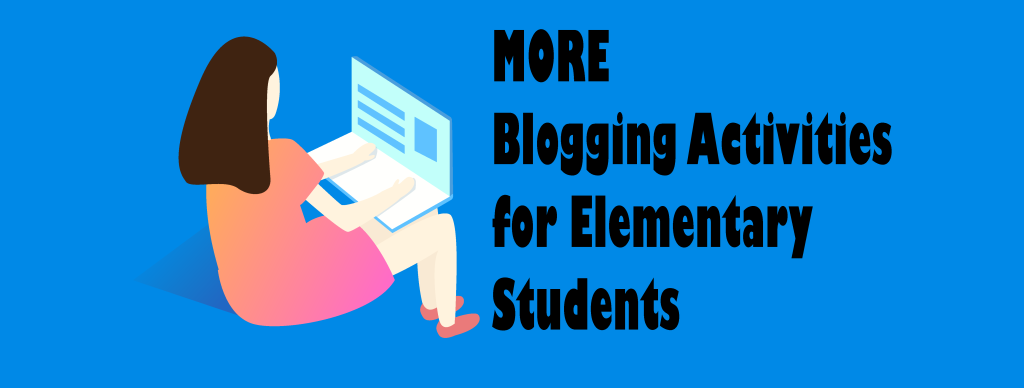Are you looking for even more blogging activities? Here are a few more ideas:
1. Art Reflection
Take a digital photo or scan a piece of artwork. Post the artwork to the blog. Have students reflect upon the creative process in a short paragraph. For example, they can identify the materials, outline the techniques used to create the art piece, describe how they feel about the artwork, explain what made them chose the subject matter, list problem areas, or propose one thing they might do differently in the future.
2. Art Critic
Post a picture of a famous painting. Have students comment upon the elements and principles of design, subject matter, or feelings evoked.
3. Transform a Written Report into a Blog Series
Replace a traditional report with a series of blog entries. Divide a topic into parts and then have each part equal a blog entry. Each entry should include a picture, video, facts, or links to topic related sites. For example, a blog series about an endangered specie could be divided into four entries. The first entry could include a picture with text that describes the appearance. The second entry could include a video that includes an explanation of the habitat. The third entry could include a list of the three most interesting facts about the animal, and the final entry could have links to sites related to the topic.
4. Science Fair Diary
Most science fair projects are done primarily at home. This can make it difficult for teachers to track progress. Have students write entries documenting their progress. Each entry is a few sentences that describe activities such as research, materials, findings, or report design. This diary allows teachers to offer helpful advice, pose thought-provoking questions, or offer encouragement throughout the project. It also helps students to maintain a regular workflow, be accountable for progress over the time period, and learn good time management skills.
5. Joint Serial Writing
Have your students engage in a joint short story writing activity. Divide your class into groups. Give each group a tag name. They must use this tag when they write each post. This will keep the story parts together. Now, assign a group member to write the beginning of the story. It must be between 3-6 sentences. The title should read Part 1 Story Name. The next group member reads the post, and then writes a new post that continues on the story. The title of that post is Part 2 Story Name. Each group member takes a turn, until the final writer must end the story. To read the story, readers must click on the tag name. Now all the story parts are displayed. Since they are in reverse chronological order, the reader needs to scroll to the bottom of the screen to read the first post. This idea works great if you want to blog but only have access to a few computers at the back of the classroom.

6. Network with the Community
Extend the walls of the classroom. Invite community members to become guest commenters. They can post comments onto blogs about a unit of study. For example, if studying flight it would be great to have a local pilot or aviation group become guest commenters for a short time.
7. e-Pal
Connect with students from another country. Students can communicate with one another by writing posts and commenting. Teachers can specify the purpose of each exchange or allow students to select the content.
8. Digital Career Day
Have students interview their parents, family member, or other significant adult to learn about their career. Responses are recorded in a blog post. Fellow classmates then read about each other’s posts to learn about job opportunities. Further questions are posed using comments. Each interviewee is assigned a guest account so that they can read their post and respond to student questions.
9. Cooperative Bookmark Collection
Encourage students to share resources with one another. Write a teacher blog that includes a collection of Internet favorites. Now challenge students to find even more great sites. Students use the comment feature to post links to great resources.
10. Research Relay
Create a learning community, in which all participating students exchange ideas. In a research relay, each student is assigned a particular section of a topic. They research that section and then write a post to his or her blog. Now the information can be passed onto everyone. This gives students a way to gather information from one another for an assignment or project.
